What to look for in a business communication solution

Product Marketing Lead, Onboarding & Ecosystem

Share
Want to run a successful business? Your team has to be good at communicating. Whether that’s communicating updates or issues with customers or communicating with teammates while you’re managing projects, almost every single business has a certain degree of both external and internal communication needs.
And to fulfill those communication needs, you’ll need the technology to support them—especially if you have a remote or distributed team.
But with so many business communication solutions out there, how can you choose the right one for your company or team?
As a remote worker who’s worked for a few companies in the business communications space, I’ve noticed that there are a few must-have features that a good business communication solution has to have. I’ll walk you through what these are, and why I think they’re important, below.
But first, let’s look at a few important ways in which the idea of “business communications” has changed.
Modern business communications
Business communications used to mean landline calls, in-person meetings, and written memos. The changes in technology—and the growing popularity of remote and hybrid work—have greatly expanded the ways in which we communicate.
Traditional telecommunications are being replaced by VoIP phone systems, while video conferencing has probably become one of the fastest-growing communication channels in the last few years.
In fact, many business communications platforms today aren’t just phone systems anymore. Take Dialpad Connect, for example, which is really a unified communications platform that also includes SMS/MMS + instant messaging, video calls, and even contact center technology—in a single app:
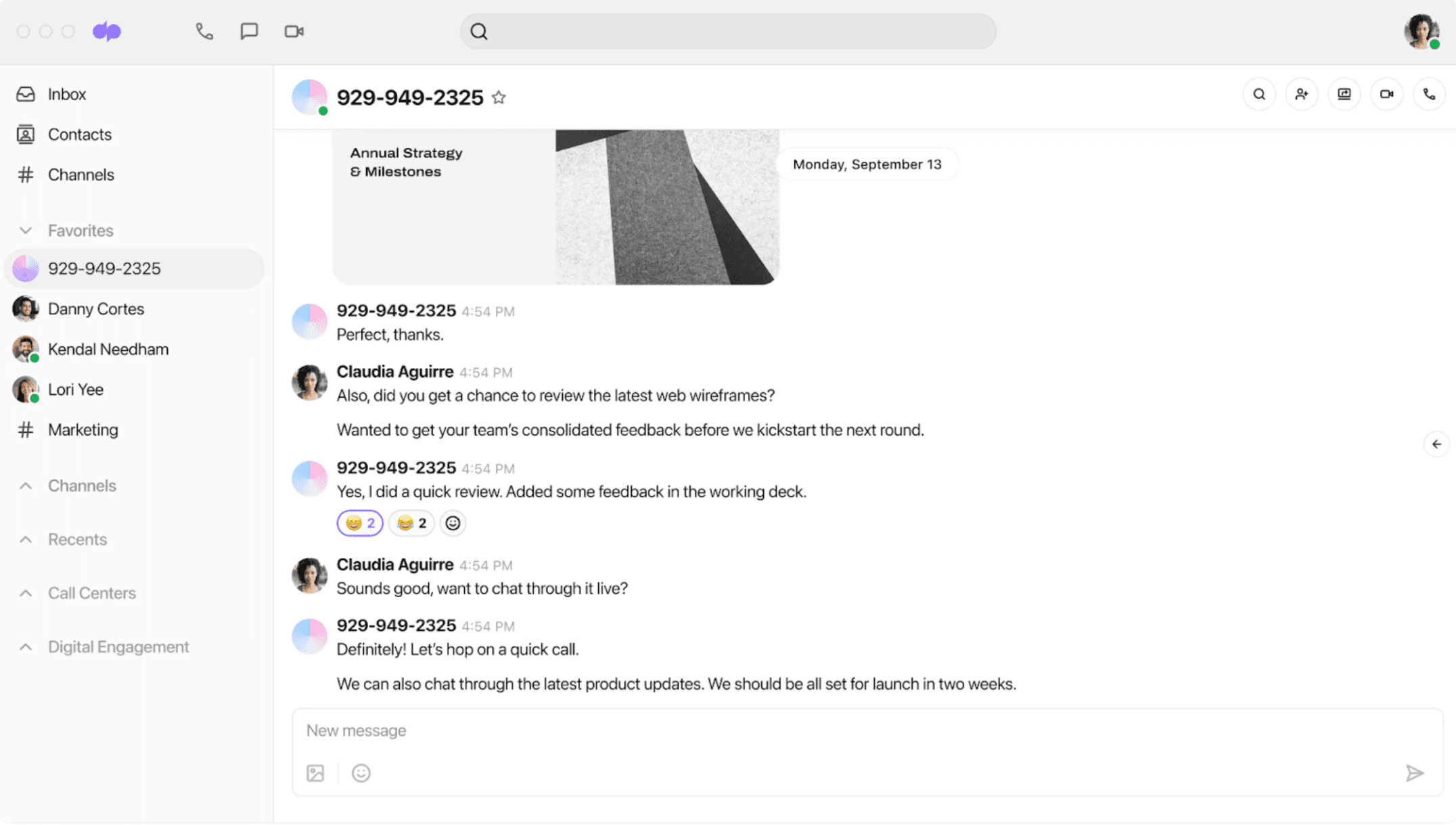
Communication solutions features
Effective communication is essential for every organization, regardless of size. In general, a solid communication solution should simplify collaboration, boost productivity, and maintain compliance with industry standards. When you’re evaluating platforms, consider the types of features that address your unique needs, like:
Seamless omnichannel communication that enables calls, messaging, and video conferencing across devices and teams.
Useful AI features like live transcription or call summaries so your team doesn’t have to spend time manually taking notes.
Ease of use and administration to simplify setup, management, and maintenance for IT teams.
Security and compliance to ensure data protection and adherence to regulations like GDPR or HIPAA.
Analytics and insights to give you actionable data to improve performance and customer experiences.
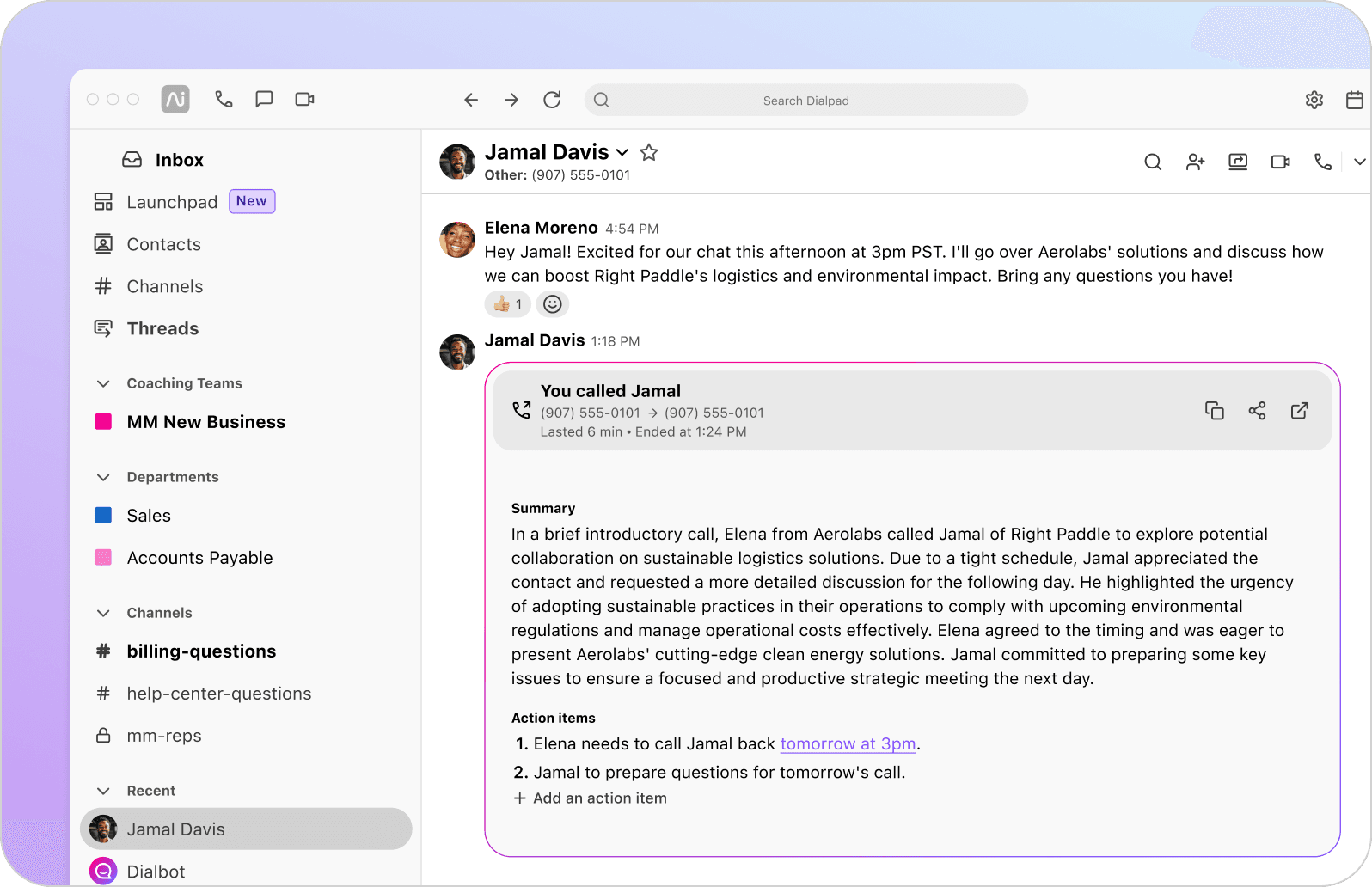
Enterprise communication solutions (1,000+ employees)
Enterprises often operate on a global scale with large, distributed teams, making advanced communication functionality a business-critical need. These organizations require platforms that are scalable, secure, and capable of integrating with the tools they already rely on.
What enterprises should pay attention to:
Sophisticated functionality from vendors that are industry leaders.
A robust platform that streamlines bloated tech stacks and reduces the administrative burden for busy IT teams.
Automations and integrations with essential business tools like Salesforce or Microsoft 365.
Fully integrated UCaaS (Unified Communications as a Service) and CCaaS (Contact Center as a Service) features to support both internal communications and a contact center or call center team.
Enterprise-grade security with built-in support for GDPR and HIPAA compliance, and other industry security requirements. An enterprise communications solution should have these features built in.
Communication solutions for mid-market businesses (100–999 employees)
Mid-market companies face unique challenges too. They need more advanced functionality than small businesses—but without the complexity or cost burden that often comes with enterprise-scale solutions. The ideal communication solution for this segment strikes a balance between flexibility, affordability, and ease of use.
What mid-market businesses should pay attention to:
Scalability without complexity. In other words, a solution that can grow with the business without requiring an enterprise-level IT department.
Flexible pricing models that accommodate expanding teams and evolving needs.
Strong integrations to productivity tools you’re already using like Google Workspace, Slack, and your CRM.
Collaboration-friendly features like video conferencing, team messaging, and file sharing to keep hybrid or remote teams connected.
Security and reliability to ensure your communications and data are protected and downtime is minimized.
Small business communication solutions (1–99 employees)
For small businesses, simplicity and cost-effectiveness are key. With leaner teams and fewer IT resources, the right communication solution should make setup, management, and everyday use as frictionless as possible.
What small businesses should pay attention to:
Value for money is crucial. Instead of forking out for multiple apps, it makes sense to choose a versatile business communication solution that lets you consolidate different apps into one platform.
Easy to set up. Small businesses typically don’t have huge IT teams to manage all their apps. Because of this, a good communications platform should be easy to set up and maintain. For example, with Dialpad, you can add a user or manage phone numbers in a few clicks right from your online dashboard.
Core features that work out of the box. For example, calling, messaging, and video conferencing without requiring heavy customization.
Room to grow. As your business expands, the platform should scale smoothly without needing you to migrate to an entirely new system.
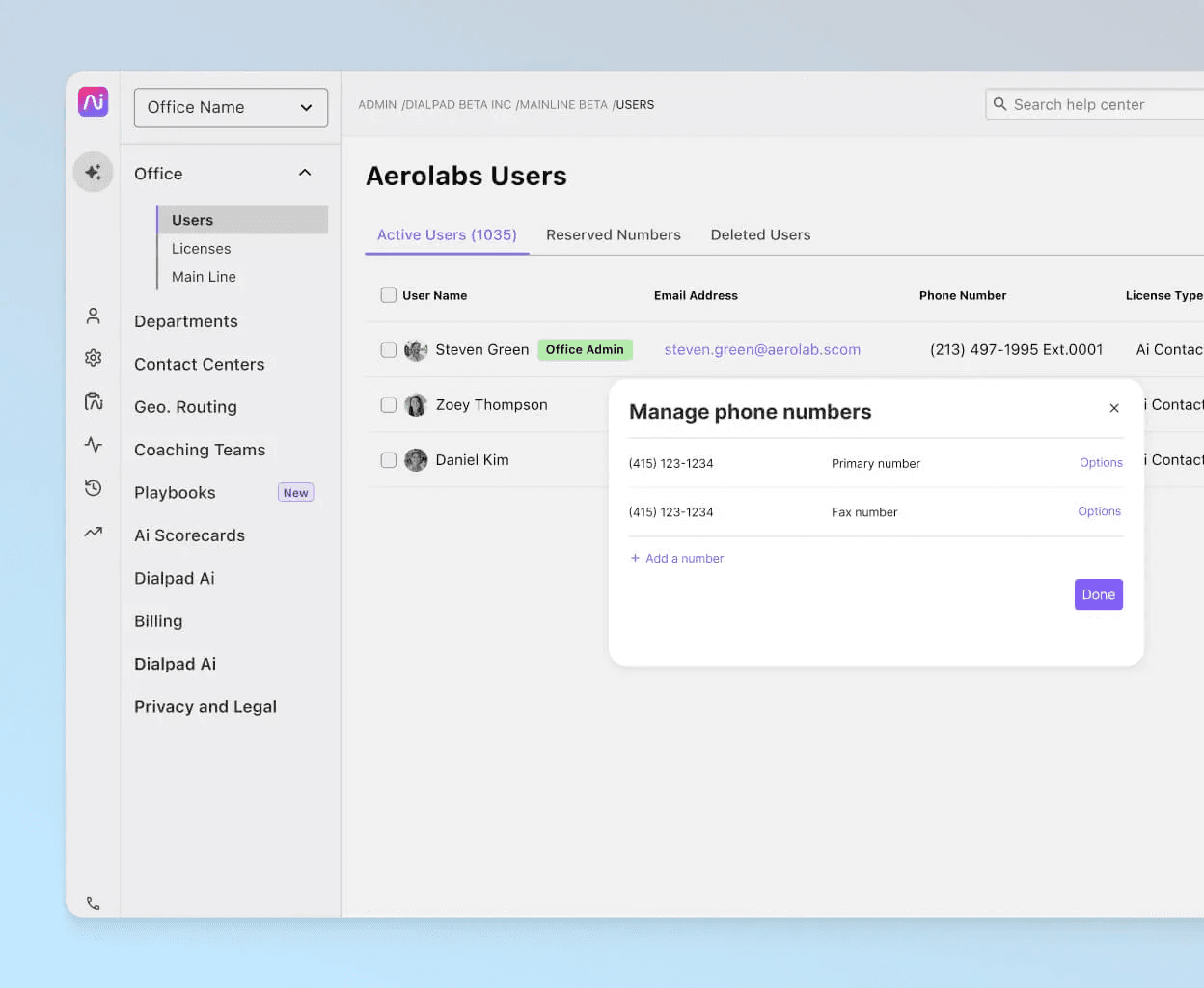
Business problems that effective communication solutions can solve
If any of these sound familiar, it might be time to upgrade your video conferencing software or cloud phone system.
Email or app overload
If you’re like me, you probably get hundreds of work emails every day. Honestly, I was getting so many notifications that I just turned them off.
Now that I use other channels, like team messaging and quick voice calls for simple questions and follow-ups, I’ve pretty much eliminated email overload and am hitting inbox zero on a daily basis. (Yes, it’s possible.)
On a related note, almost every company I’ve ever worked at had way too many apps—definitely more than we were actually using. A good unified communications solution can help you streamline your tech stack so that you’re not paying for obsolete or multiple apps that do the same thing.
For example, instead of paying for (and managing) a video conferencing app, an instant messaging app, and a separate phone system, we just use Dialpad Connect, which covers all of that functionality in a single place.
Silos and ineffective communication with remote team members
If you have a remote workforce, a good communications solution is even more important because it’s pretty much the only thread that connects all your distributed teammates together.
When you’re not in a traditional workspace, you can’t just walk over to a colleague’s desk to ask them a question or go for a coffee walk with them as a stand-up meeting. For me, a good team communication tool and project management platform are essentials.
With Dialpad, we have virtual water cooler threads, one-on-one video meetings, and other creative ways to connect with remote teammates all through the platform. It’s not a perfect replacement, but in my experience it’s the next best thing—and it does exactly what I need.
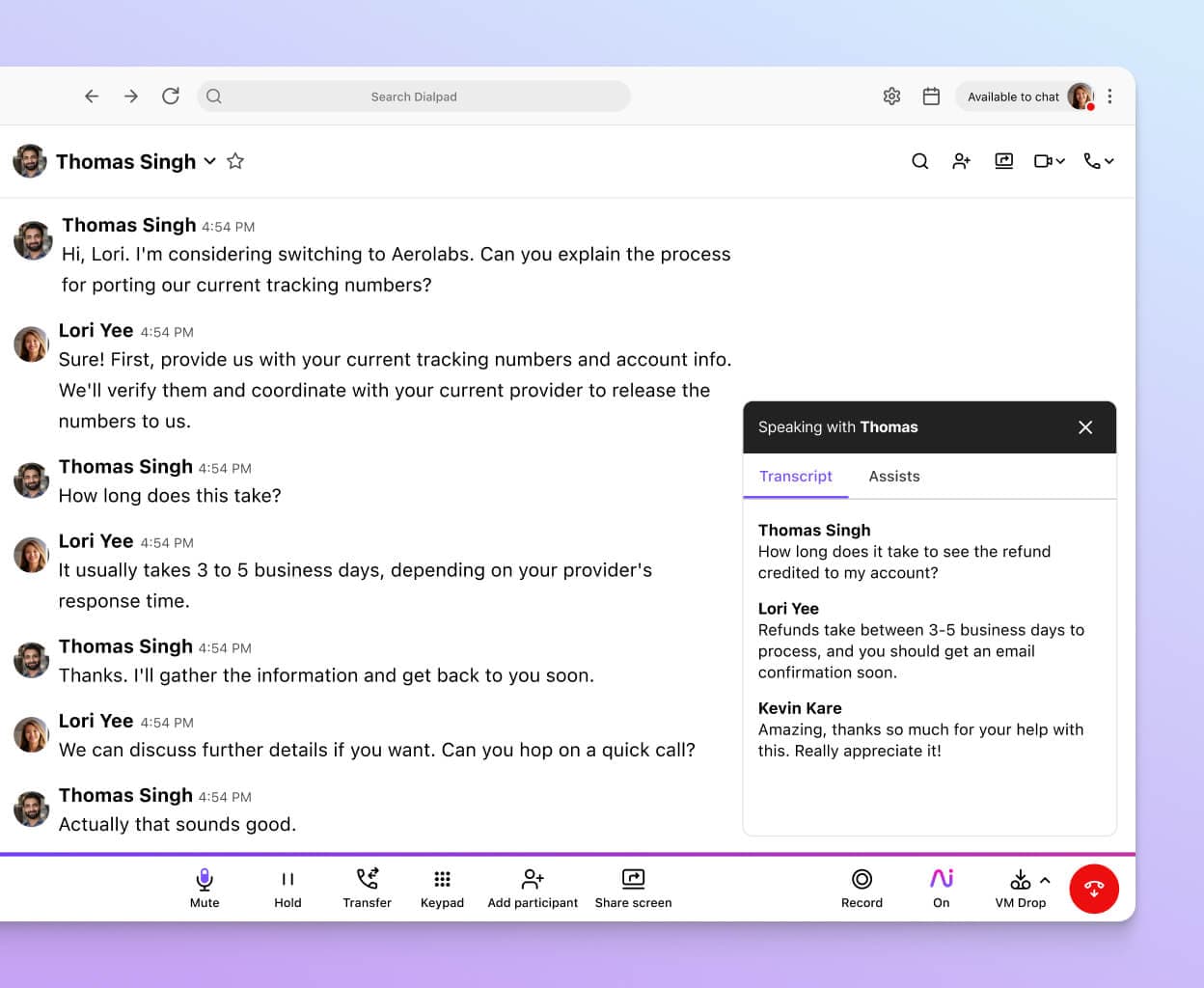
Poor customer service
Often, bad customer service stems from a few common things: your customer support team can’t respond to customers quickly enough and/or they can’t resolve issues effectively.
Both of these problems can be solved with good communications.
For example, with a good phone system or contact center platform, you can set up call routing that gets callers to the right person or department quickly.
And with a good communications solution, agents can message their supervisors for help in real time when they get hard questions from customers, get instant answers with the help of AI, and even manage multiple channels (including voice, digital, and social media channels like WhatsApp and Facebook Messenger) from one app:
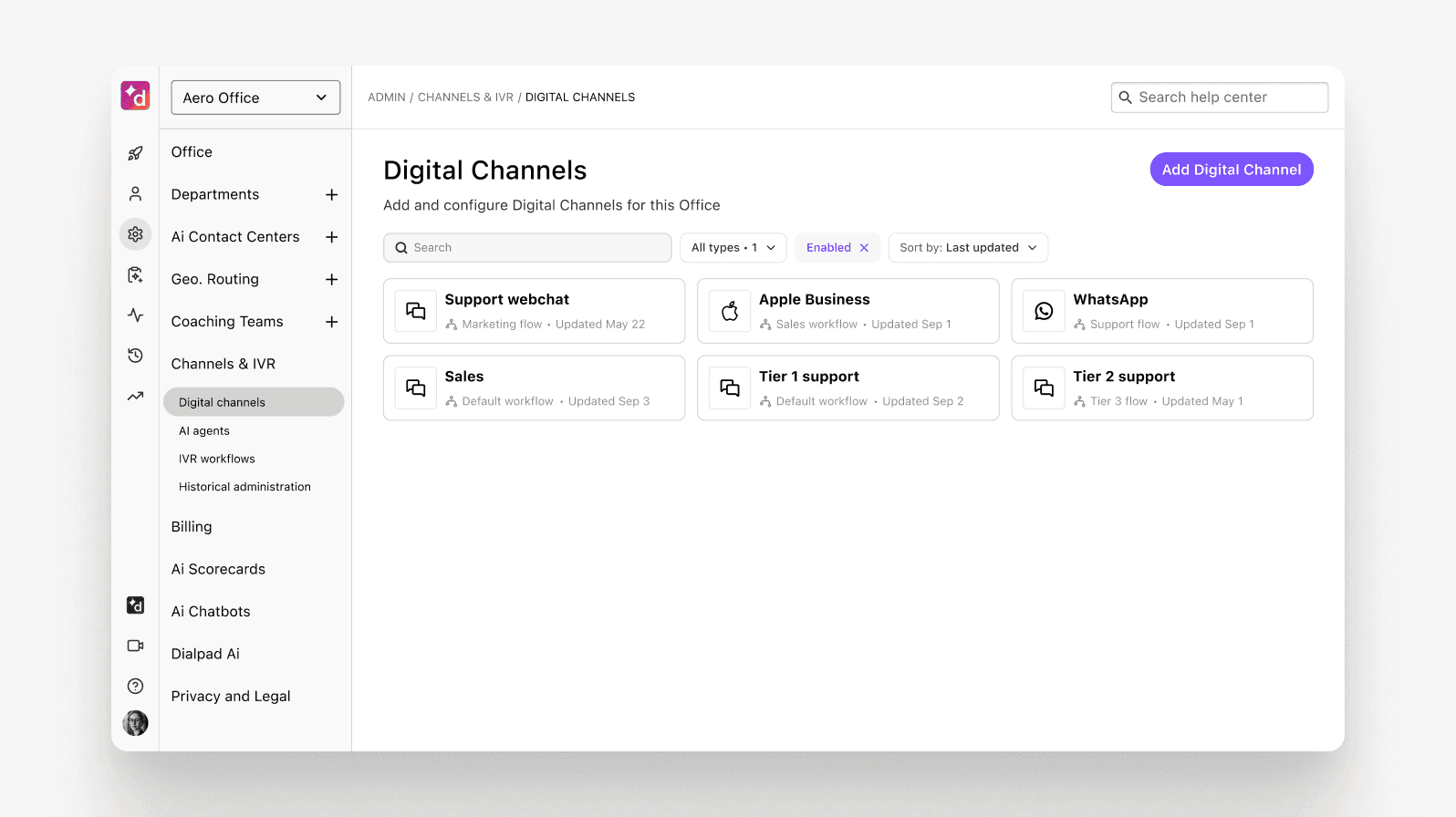
Dialpad's omnichannel contact center platform lets agents manage conversations across every social and digital channel in one place.
All of which helps make their lives easier—and improves the customer experience.
Gaining insights through business communication solutions
A good business communication solution does more than just connect people—it transforms your phone system into a performance engine. By integrating calling, messaging, and video with AI-powered analytics, organizations can gain actionable insights that drive productivity, improve customer experiences, and inform strategic decisions.
This turns every conversation into an opportunity to learn, optimize, and grow. This goes beyond simple call logs or voicemail tracking; it’s about understanding patterns, measuring engagement, and making data-driven decisions that have a real impact on your bottom line.
How Dialpad Connects turns calls into actionable insights
Here are just a few examples of how Dialpad’s unified communications platform can unlock powerful learnings from the internal and customer conversations you’re already having every day:
Real-time call analytics. Monitor call volume, duration, and outcomes to understand team performance and identify trends.
Sentiment analysis and transcription. Dialpad AI automatically transcribes conversations and detects sentiment to uncover customer satisfaction signals and agent training opportunities.
Performance dashboards. Track KPIs for individual reps, teams, or departments, helping managers spot bottlenecks and reward high performers.
Integration with business tools. Connect communication data and AI-powered live coaching to your CRM, helpdesk, and productivity software to streamline workflows and improve context during customer interactions.
Predictive insights. Use features like Dialpad’s AI CSAT to accurately infer customer satisfaction from customer calls without needing to send out surveys.
Sign up for a free trial of one of the best business communication solutions
A phone system might connect your calls—but an AI-powered business communication solution amplifies the potential of everyone on your team.
By augmenting your agents with Dialpad AI features like real-time transcription, live coaching, and sentiment analysis, you can make sure they can focus on what they do best: building relationships, solving problems, and delivering exceptional customer experiences.
Try Dialpad for free to experience firsthand how these solutions can turn your everyday communications into strategic advantages.
What’s the best business communications solution for your organization?
The best way to find out is to try it for yourself. Sign up for a 14-day free trial of Dialpad’s AI-powered communications platform to see how it can streamline communications for your business!
